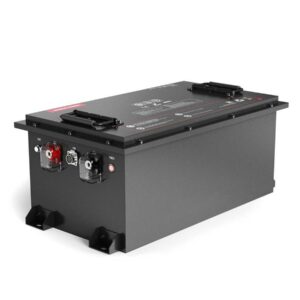
What is the most efficient chemical battery?
The most efficient chemical battery currently available is the lithium-ion battery, specifically variants utilizing nickel-manganese-cobalt (NMC) or nickel-cobalt-aluminum (NCA) cathode chemistries. These achieve energy densities of 250–350 Wh/kg, coupled with 90–95% round-trip efficiency and 2,000–4,000 charge cycles. Advanced lithium-sulfur prototypes reach 500 Wh/kg but face cycle life limitations. For practical applications, commercial lithium-ion batteries dominate due to their optimal balance of energy density, power output, and longevity.
What Is the Best Battery for a Diesel Pickup Truck?
How is battery efficiency quantified?
Battery efficiency is measured through three key metrics: energy density (Wh/kg), round-trip efficiency (energy out/energy in), and cycle life. Lithium-ion leads with 250–350 Wh/kg energy density and 90–95% round-trip efficiency, outperforming alternatives like lead-acid (30–50 Wh/kg) or nickel-metal hydride (60–120 Wh/kg). Pro Tip: Prioritize energy density for weight-sensitive applications (e.g., EVs) and cycle life for stationary storage.

Beyond raw numbers, thermal management significantly impacts real-world efficiency. Lithium batteries maintain 85% capacity at -20°C with proper heating systems, while lead-acid plummets to 50%. A Tesla Powerwall 2 demonstrates this practically—its NMC cells deliver 13.5 kWh with 90% efficiency, compared to lead-acid alternatives needing double the weight for equivalent capacity. Why does this matter? Reduced energy waste translates directly to lower operational costs.
What distinguishes lithium-ion from solid-state batteries?
Solid-state batteries replace liquid electrolytes with ceramic/polymer conductors, enabling safer operation and 500+ Wh/kg potential. Unlike conventional lithium-ion using graphite anodes, solid-state designs employ lithium metal anodes for 70% higher capacity. However, current prototypes face challenges with ionic conductivity at room temperature. Toyota’s experimental 745 Wh/kg solid-state cell showcases the technology’s promise but remains years from commercialization.
Transitionally speaking, solid-state technology eliminates flammable components—a critical safety enhancement for EVs. QuantumScape’s multilayer ceramic separator prevents dendrite formation even at 4C fast-charging rates. Yet production costs remain prohibitive: manufacturing a 100 kWh solid-state pack currently costs ~$35,000 versus $12,000 for lithium-ion. When will this change? Industry analysts predict cost parity by 2030 with scaled production.
| Parameter | Lithium-Ion | Solid-State |
|---|---|---|
| Energy Density | 350 Wh/kg | 500+ Wh/kg |
| Cycle Life | 4,000 cycles | 1,200 cycles (current) |
| Fast-Charge Rate | 2C | 4C |
Battery Expert Insight
FAQs
Can sodium-ion batteries surpass lithium-ion efficiency?
Not currently—sodium-ion achieves 120–160 Wh/kg with 80% round-trip efficiency. They excel in cost ($50/kWh vs. $130/kWh for lithium-ion) but lack energy density for automotive applications.
How does temperature affect battery efficiency?
Below 0°C, lithium-ion loses 20–30% capacity temporarily. Permanent capacity loss occurs if charged below -10°C due to lithium plating. Always precondition batteries in cold climates.
